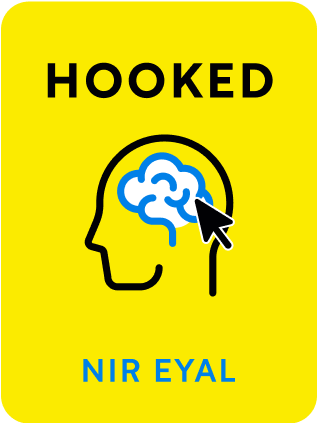

This article is an excerpt from the Shortform summary of "Hooked" by Nir Eyal and Ryan Hoover. Shortform has the world's best summaries of books you should be reading.
Like this article? Sign up for a free trial here .
What are habits? Do you know how to form habits, and how to use the psychology of habits to build a loyal customer base?
Habits are actions that are done routinely without needing to overtly choose to do them. Knowing how to form habits is important to building better behaviors, and can help you attract customers.
Read more about how to form habits and why it matters for marketers.
What Are Habits?
Habits are a way for the brain to conserve resources by executing automatic behaviors without thinking hard about it. Habits are established when the action has continuously solved the problem in the past.
When you get ready for bed, you execute a specific sequence of actions that you don’t have to think very hard about. Likewise, when you feel bored, you may execute a habit of turning on your phone and swiping up to refresh your feed, since this was an effective way of combating boredom in the past.
So what are habits and their importance for companies? Habits are valuable for companies because:
- Habits increase lifetime value (LTV).
- The more they use a product, the more purchases they make and the more ads you can serve.
- Habits provide pricing flexibility, allowing companies to charge more as users deepen their habits.
- A “smile graph”, with % of signups on y-axis and time on the x-axis, shows an initial plummet but an increase as time passes and habits deepen.
- Habits increase likelihood of word-of-mouth and decrease the viral cycle time.
- More frequent users initiate more behavior loops in less time for more people (e.g. tagging friends in a Facebook photo).
- A big part of Facebook’s domination over MySpace and Friendster could be due to deeper engagement (due to the use of real identity and features like the Newsfeed) and faster organic growth.
- Habits form competitive moats, preventing customers from leaving even to superior products.
- People fall back to old habits easily, with etched neural pathways ready to be reactivated.
- Even if Bing were better than Google in finding results, it can feel slower because you’re unfamiliar with its interface.
- New products need to be 10x better to break ingrained behavior.
How to Form Habits
So, if you see the value in habits, you probably want to know how to form habits. Habits are more likely to be established when the action is more frequent and when the perceived utility is higher. Utility is an important factor in how to form habits. Google quickly became a habit since searches happen on a daily basis, and its search results were much more useful than competing search engines.
For infrequent actions to become habit, the user must perceive a high degree of utility. This applies to purchasing items and large transactions.
- To provide more utility to the user, retailers like Amazon show ads for direct competitors, sometimes with cheaper prices than what Amazon has. While this might seem short-sighted (the user can buy with the competitor), the long-term game Amazon is playing is to associate itself with solving the problem of shopping. Users build loyalty to Amazon for being the place to start shopping. Other marketplaces like Kayak and vendors like Progressive Insurance have used this strategy with positive results.
Some behaviors never become habits because they don’t occur frequently enough – you don’t really have a house-buying habit if you buy a new house every 10 years.
Is it better for your product to be a painkiller (solving an obvious pain point) or a vitamin (nice-to-haves, appealing to emotional needs)? While classically investors prefer the former, some of the largest companies – Facebook, Snapchat, Instagram – don’t seem to be solving “real” pain points – getting social validation isn’t nearly as important as feeding yourself when it comes to how to form habits.
Products can begin as vitamins but, once the behavior is ingrained, they become pain remedies, removal of which becomes painful. Similarly, when people first heard of Facebook, they likely didn’t think they needed it in their lives; but a few years later, many find the news feed indispensable and addictive. That feeling is how to form habits.

———End of Preview———
Like what you just read? Read the rest of the world's best summary of Nir Eyal and Ryan Hoover's "Hooked" at Shortform .
Here's what you'll find in our full Hooked summary :
- The 4 key steps that addictive tech products use to ensnare you
- Why user rewards need to be random and variable to have the strongest effect
- How to build irresistible apps yoruself






